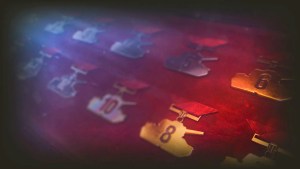Supertest: Tier X U.S. Aircraft Carrier Franklin D. Roosevelt
7 min readU.S.S Franklin D. Roosevelt was the second ship of the Midway-class aircraft carriers and the first aircraft carrier named after a President of the United-States. Launched on 29 April 1945 and commissioned on 27 October 1945, the ship barely missed World War II.
Overall, she had a quiet career, being part of the Sixth fleet that was deployed in the Mediterranean Sea for most of her active service.
The ship was the first aircraft carrier to operate an all-jet aircraft with tests on the McDonnell XFD-1 Phantoms.
In 1954, the ship was temporarily decommissioned to undergo an extensive refit (SCB-110). She received an enclosed hurricane bow, new catapults, strengthened arresting gear, an enlarged bridge, a mirror landing system, and a 147 m angled flight deck. SPS-8 height finding radar and SPS-12 air search radar were mounted on a new tubular mast. The aft elevator was relocated to the starboard deck edge, the forward elevator was enlarged, and all elevators were uprated to 75 000 lb (34 000 kg) capacity. Aviation fuel bunkerage was increased from 350 000 to 450 000 gallons (1 320 000 to 1 700 000 L). Standard displacement rose to 51 000 tons, while deep load displacement rose to 63 400 tons. As weight compensation, several of the 127 mm Mark 16 anti-aircraft guns were landed, leaving only 10, and the 3 200 ton armor belt was removed. Hull blisters were also added to cope with the increased weight. Roosevelt was recommissioned on 6 April 1956.
From August 1968 to January 1967, the ship was deployed to Southeast Asia and received one battle star for her service during the Vietnam War.
In 1968, she underwent another modernization, however, due to massive costs overruns in Midway’s reconstruction, Roosevelt only received a limit refit, enabling her to operate the Grumman A-6 Intruder and TLV A-7 Corsair II.
By the late 1970s, the Franklin D. Roosevelt was well behind her sisterships due to the limited refit that she received. In April 1977, Roosevelt completed her final cruiser and was replaced by the Nimitz-class aircraft carrier Dwight D. Eisenhower. Even though some efforts were made to preserve her, in the end, the ship was scrapped in 1978.
In World of Warships, the ship is as she was in 1948/the early 1950s since she is missing a part of her original Dual-purpose battery. She is only carrying the Douglas TB2D Skypirate (Devastator II), a torpedo bomber that was intended to serve on the Midway-class. Two prototypes of this plane were built but due to the fact that dedicated torpedo bombers were becoming an obsolete concept, the production was canceled.
These planes could carry up to 3 800 kg of bombs or 4 torpedoes.
Roosevelt’s aircraft will have a solid supply of armament and a good amount of hit points, but low speed and an interval of 25 seconds between squadron attacks.
This way, Roosevelt’s planes will be able to launch powerful but infrequent attacks on enemy ships.
Also, all the aircraft carrier’s squadrons are equipped with a “Repair” consumable with special settings:
The consumable is recharged more quickly.
The action time is longer than on other aircraft carriers.
Restores less amount of hit points than the same consumable on the other aircraft carriers.
This consumable is not designed to provide effective defense against the enemy’s AA guns during an attack, but will help to restore the squadron’s hit points between attacks, when outside the enemy’s AA zone.
Roosevelt’s attack aircraft will also have special rocket launcher settings. Despite the large number of rockets in each attacking flight, they will be fired one by one and over a large area. Therefore, this type of armament will not be excessively effective against small and maneuverable targets, such as destroyers.
Hull | Engine | Torpedo bomber | Dive Bomber | Attack Aircraft |
Franklin D.Roosevelt |
Propulsion: 212 000 HP |  TB2D Skypirate |  TB2D Skypirate |  TB2D Skypirate |
| Tier | X |
| Health | 67 600 HP |
| Displacement | 59 901 tons |
| Aircraft on deck | |
| Attack Aircrafts | 15 |
| Torpedo Bombers | 12 |
| Dive Bombers | 12 |
| Secondary Armament | |
| Maximum Firing Range | 5.00 km |
| 127 mm/54 Mk39 | 14 x 1 127 mm |
| Anti Air Defense | |
| 127 mm/54 Mk39 | 14 x 1 127 mm |
| 40 mm Bofors Mk2 | 21 x 4 40 mm |
| 20 mm Oerlikon Mk4 | 16 x 1 20 mm |
| Maximum speed | 33 kt |
| Turning Circle Radius | 1 230 m |
| Rudder Shift Time | 17.3 s |
| Surface Detectability | 15.9 km |
| Air Detectability | 12.4 km |
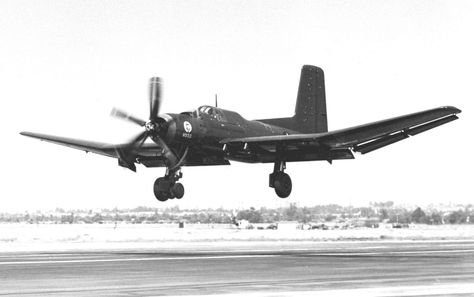
Attack aircraft – TB2D Skypirate | |
| Tier | X |
| Hit points per plane | 3 200 |
| Cruise speed | 111 kt |
| Maximum speed | 151 kt |
| Engine boost time | 5 s |
| Engine boost reload time | 10 s |
| Size of attacking flight | 2 |
| Aircraft per squadron | 10 |
| Rocket type | HVAR 127 mm |
| Rockets per plane | 30 |
| Maximum rocket damage | 2 000 |
| HE penetration | 33 mm |
| Fire chance | 7% |
| Detectability range | 10.0 km |
| Aircraft restoration time | 123 s |
| Aircraft on deck | 15 |
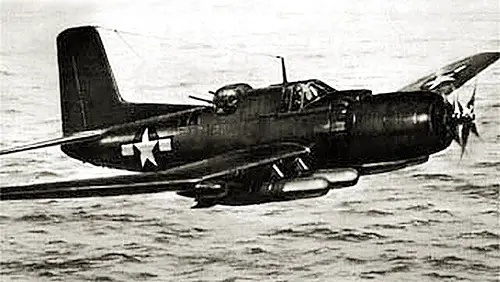
Torpedo bomber – TB2D Skypirate | |
| Tier | X |
| Hit points per plane | 3 790 |
| Cruise speed | 108 kt |
| Maximum speed | 143 kt |
| Engine boost time | 20 s |
| Engine boost reload time | 40 s |
| Size of attacking flight | 2 |
| Aircraft per squadron | 8 |
| Torpedo type | Torpedo Mk.7 mod. 1 |
| Torpedoes per plane | 4 |
| Maximum torpedo damage | 5 067 |
| Maximum torpedo range | 4.0 km |
| Torpedo speed | 35 knots |
| Torpedo arming distance | 517 m |
| Flooding chance | 42% |
| Detectability range | 10.0 km |
| Aircraft restoration time | 134 s |
| Aircraft on deck | 12 |
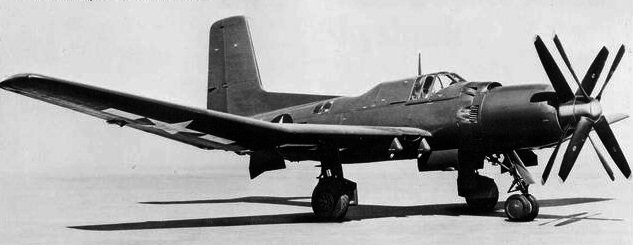
Dive bomber – TB2D Skypirate | |
| Tier | X |
| Hit points per plane | 3 860 |
| Cruise speed | 108 kt |
| Maximum speed | 143 kt |
| Engine boost time | 20 s |
| Engine boost reload time | 40 s |
| Size of attacking flight | 2 |
| Aircraft per squadron | 8 |
| Bomb type | AN-M66 |
| Bombs per plane | 4 |
| Maximum bomb damage | 11 200 |
| Projectile mass | 931 kg |
| HE penetration | 67 mm |
| Aircraft restoration time | 126 s |
| Aircraft on deck | 12 s |
| 14 x 1 127 mm/54 Mk39 | |
| Maximum Firing Range | 5.000 km |
| Reloading Time | 4.0 s |
| Sigma | 1.00 sigma |
| Shells | |
| Type of Projectile | HE – 127 mm HE Mk41 |
| Alpha Damage | 1 800 HP |
| Damage | 550 HP |
| HE penetration | 21 mm |
| Explosion Size | 0.44 |
| Chance to Cause Fire | 9 % |
| Projectile Speed | 808 m/s |
| Air Drag | 0.279 |
| Projectile Mass | 31.75 |
| 14 x 1 127 mm/54 Mk39 | |
| Sector range | 0.1 km – 6.0 km |
| Hit chance | 100 % |
| Sector’s damage | 50 |
| Sector’s damage frequency | 0.29 s |
| Sector’s damage per second | 175 |
| Flak clouds number | 8 |
| Flak cloud damage | 1 610 |
| 21 x 4 40 mm Bofors Mk2 | |
| Sector range | 0.1 km – 3.5 km |
| Hit chance | 100 % |
| Sector’s damage | 154 |
| Sector’s damage frequency | 0.29 s |
| Sector’s damage per second | 539 |
| 16 x 1 20 mm Oerlikon Mk4 | |
| Sector range | 0.1 km – 2.0 km |
| Hit chance | 95 % |
| Sector’s damage | 32 |
| Sector’s damage frequency | 0.29 s |
| Sector’s damage per second | 112 |
Slot 1 | Slot 2 |
Work time: 60 s Cooldown: 90 s | Number of charges: 4 Work time: 600 s Number of fighters 4 Action radius: 3 km Reload time: 40 s |
The armor

First thing first, don’t ask me why but on the armor view, the ship is mirrored. The superstructure that is normally on the starboard side is on the port side, etc.
For the armor itself… well it’s a Midway-class so when it comes to taking hits, she is quite good.
The bow section
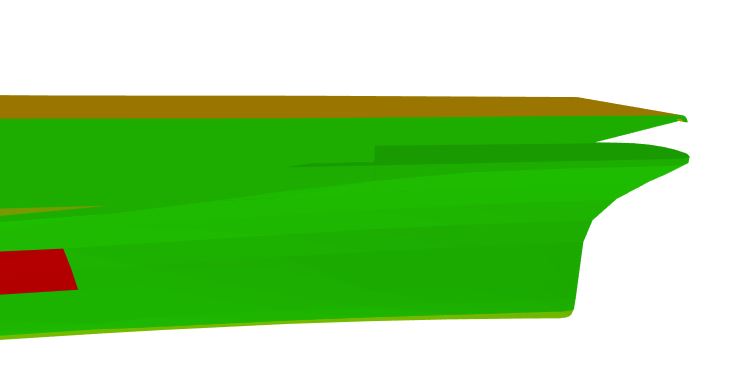
The bow of the Franklin D. Roosevelt. is covered with 19 mm of armor which means that, starting from 283 mm (at least for the gun calibers currently in the game) AP shells will be able to overmatch it.
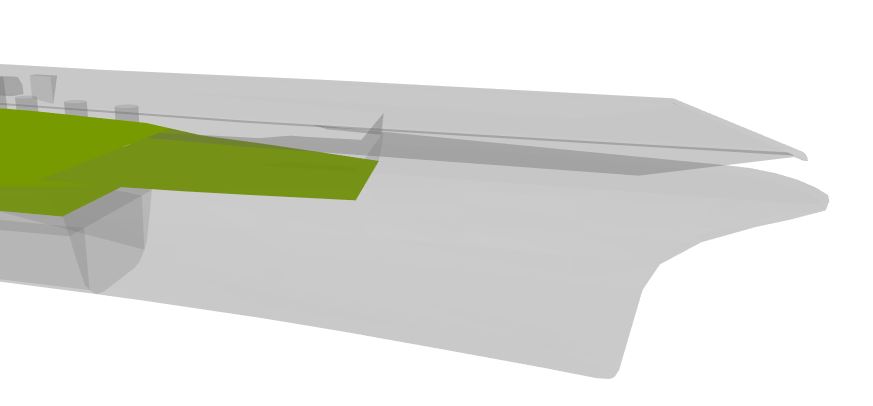
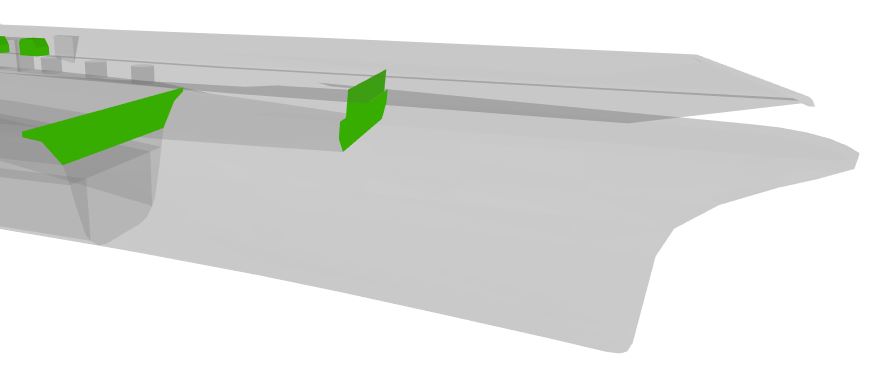
Inside the bow, there is a 50 mm armor deck. It isn’t really useful since it’s high on the ship and also fairly short but it still potentially be useful for some cases of plunging fire I guess.
Just above that armored deck, there is also a 25 mm bulkhead. It isn’t useful at all but it exists. As you can see, the casemate protecting the middle section is also 25 mm thick.
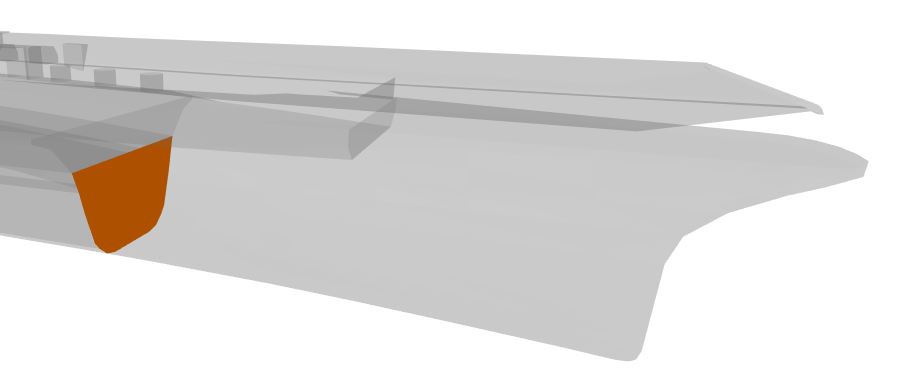
Under the 25 mm casemate, there is the citadel athwartship and the bulkheads around it with 160 mm of armor.
The middle section

The Roosevelt has a very good armor protection. The flight deck is 87 mm thick which will shatter most HE shells and will bounce AP shells as well unless it’s at extreme ranges where they start having chances to penetrate.
The sides are 19 mm thick except for the main belt that is 178 mm thick on the starboard side (the side where the superstructure is) and 193 mm thick on the port side.
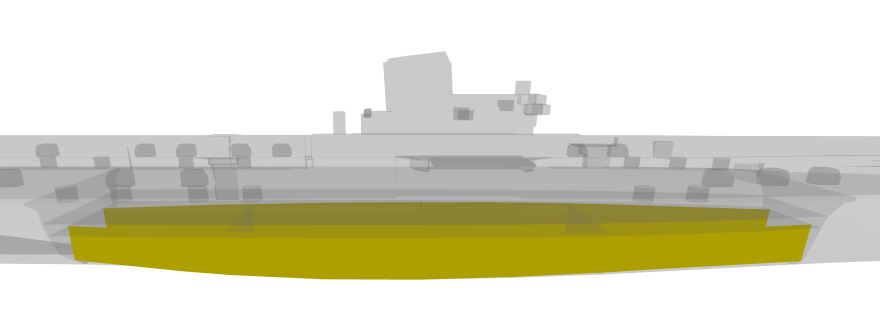
Below the waterline, the citadel is protected by a spaced armor. Its sides are 74 mm thick.
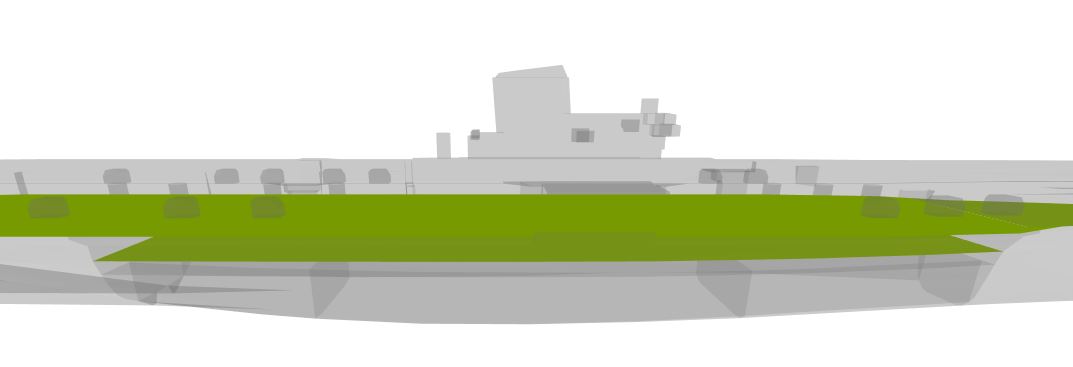
For the horizontal protection, below the flight deck, there is a first armored deck with 50 mm of armor and then under this one, the citadel deck that is also 50 mm thick. The ship is simply immune to citadels from AP bombs.
The stern section
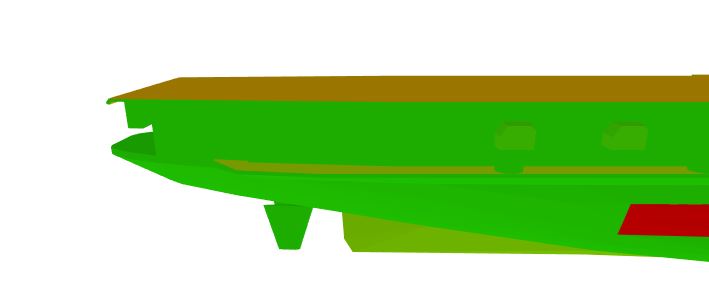
The stern is (except for the flight deck of course) covered with 19 mm of armor. Anything with 305 mm guns (or even 283 mm in case a fail div brings a Scharnhorst in a tier X match) can overmatch it with AP.
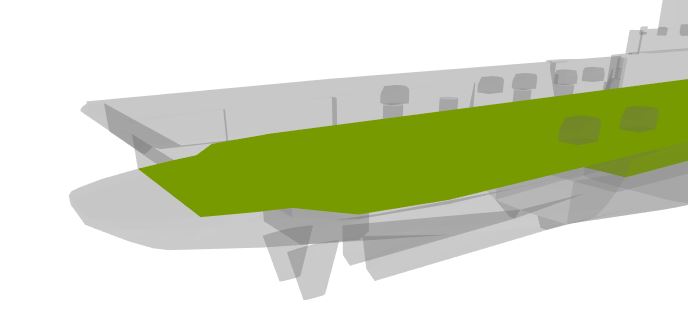
Inside the stern, there is a 50 mm armored deck that will prevent shells from hitting the citadel athwartship if they come from a relatively high angle.
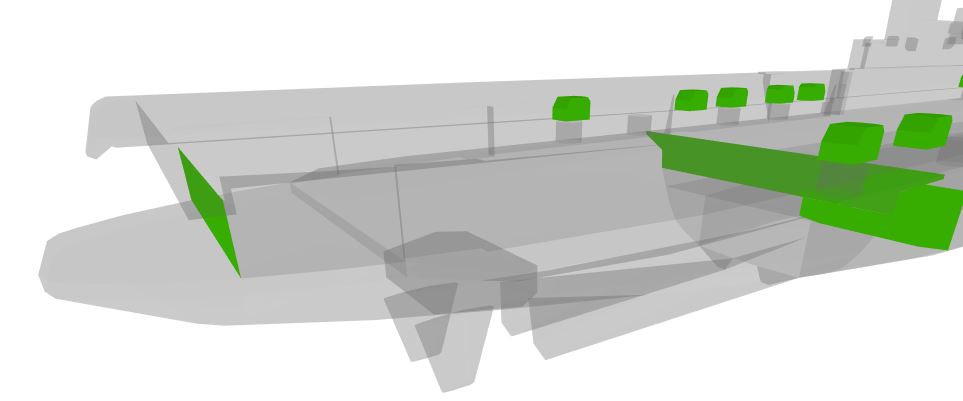
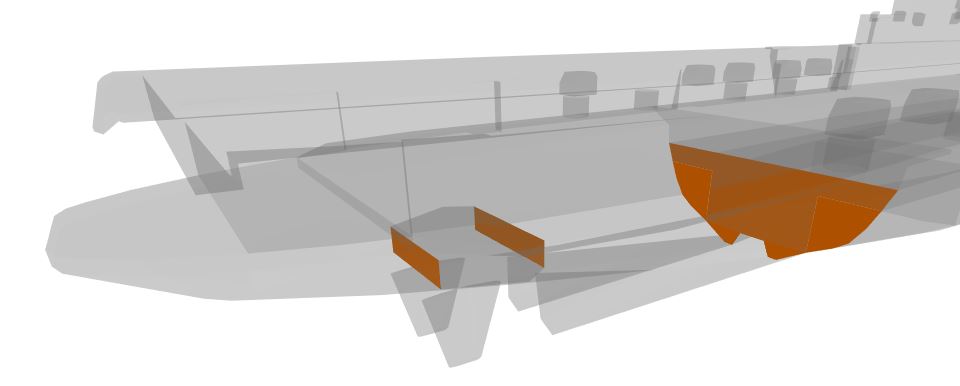
For the protection of the middle section, the upper casemate is 25 mm thick and the citadel athwartship, as well as the bulkheads around it, is 160 mm thick.
Personal opinion
Right now, getting an early feeling on how the Roosevelt could potentially perform is quite tricky.
She has by far the most resilient squadrons of the games while taking into account both plane speed and plane HP but at the same time, the long waiting time between strikes and low speed of the planes will limit her damage output. We also still don’t know anything about the dispersion pattern of her bombs and torps and most of all, we don’t know how her rocket strike will work exactly.
You will, by the way, note that I made sure to release that article before the 1st of April, didn’t want any problem with the April fool.







